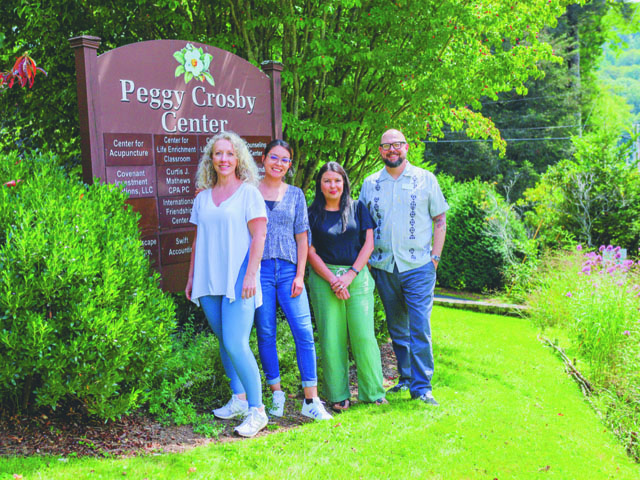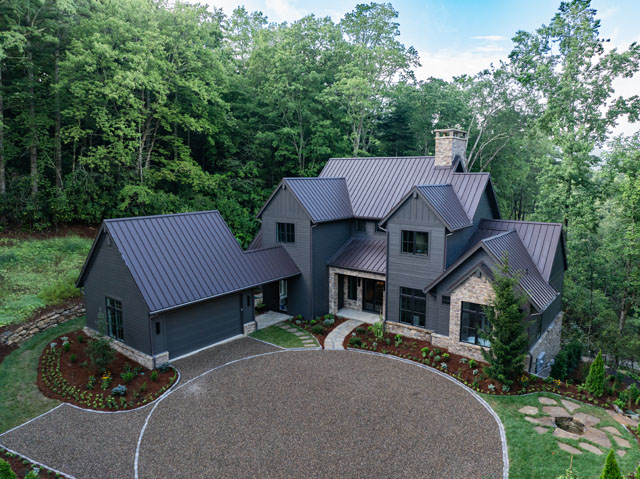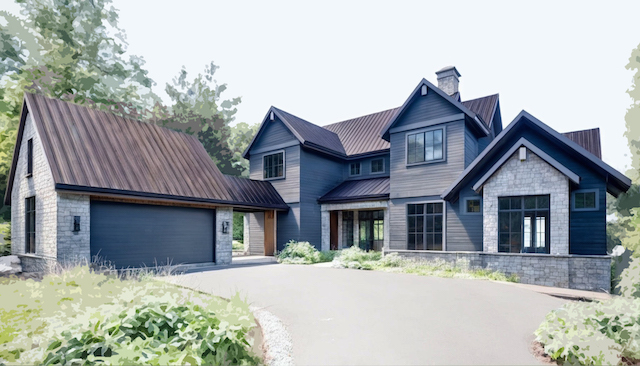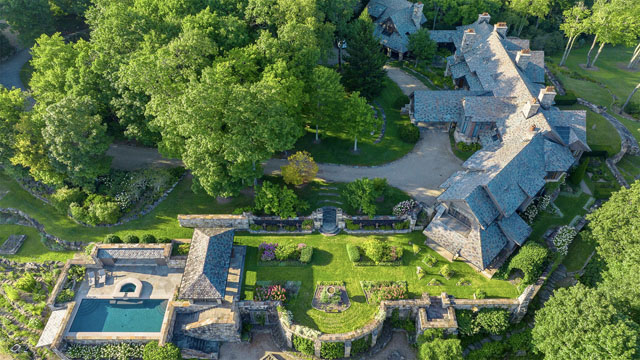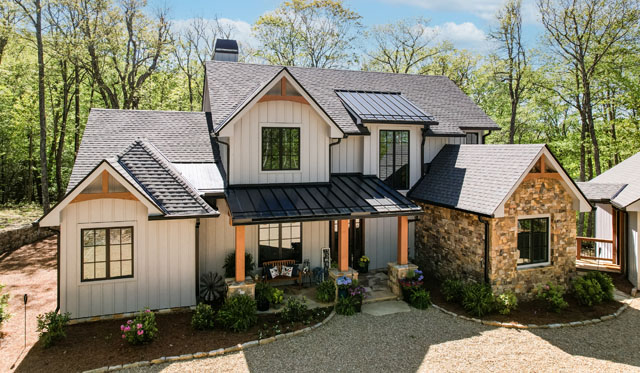No Plant Is an Island
02 Aug 2023
Understanding Plant Communities for Successful Landscape Design
Story and photos by KRISTIN E. LANDFIELD
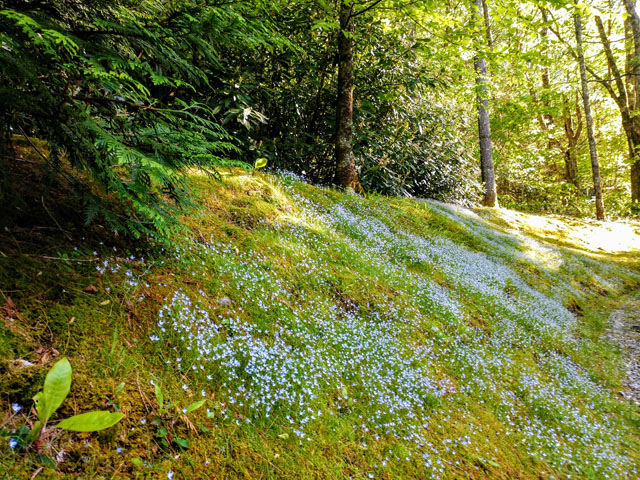
“People from a planet without flowers would think we must be mad with joy the whole time to have such things about us.” —Iris Murdoch
In our April/May and June/July issues, we explored indigenous plants of the Southern Appalachians, contemplating their role in fine gardens and wild spaces alike. It’s now August. As we end these summer months, the glory of our native wildflowers paints these mountains with an impressionism no artist could render. Lazy rays of sunlight bend and lengthen—softening—while easy summer evenings shorten. Frothy purple asters and golden Solidago brim from roadside ditches, towering above fields of ocher grasses. They govern the season’s color palette, and we gladly consent, dressing our tables with the flowers’ rich hues.
In late summer, the shift in seasons announces itself more loudly with each passing day. The change is palpable. I associate these days with sticky afternoons and the buzzing racket of insects in the tall grass. For the gardener, this is a time of submission. We are more willing to acquiesce to the voluptuous garden and to its weeds—to let it be what it will for the season. It’s a time when the vegetation simply wields a stronger argument. Appropriately, the Anglo-Saxon scholar Bede described August as "Vueod-Monath” (“Weed Month”), the month of weeds, as this is the time when they grow most abundantly. One can (and should!) deadhead, weed, groom, and tidy, but the blooms remaining will give just what they have. We can loosen our industrious grasp and appreciate the warm presence the flowers so readily offer.
As we enjoy these last notes of summer, it’s good to observe our native surrounds and take stock. Along hiking trails and neighborhood sidewalks, the ground plane offers the same wisdom Bede did in the 7th century: weeds abound. It’s easy to get caught up wrestling these weeds in cultivated spaces, but their insurgence is a sage teacher as much as it is a nuisance. The message: plants cover the ground plane. Eventually, plants will inhabit any space with even a crack to penetrate. Their persistence is irrefutable. Recognizing this inevitability is useful in understanding design and management of gardens and landscapes.
About a month ago, I was walking by a washed-out swath of mulch that spilled into a topographical depression. I could see this was recently planted and knew the mulch-logged indentation in the landscape was designed to receive and manage stormwater. Over a relatively large expanse of space, there were about 12 perennials and grasses—all good native species for our area and well-selected (in theory) to drink up excesses of water. Conceptually, this method is an excellent expression of horticulture solving environmental complexities in manufactured spaces. These plants (a couple of Iris, some goldenrod, bluestem and coneflowers) were dotted in little islands between exposed arroyos in the mulch. They seemed like they’d just been plopped there, amidst poor soil and good intentions. Chances are, though, someone put a lot of thought and effort toward this project. The outcome was unsatisfactory and static—each plant left striving on its own. “Those plants look lonely,” I thought.
Last week I walked by this same planting and saw these plants were no longer lonely. Twisting bindweed and aggressive pokeweed were outstripping the growth in the chosen plants. There had been sufficient rain and hot temperatures for the weeds to push a remarkable amount of growth in just a few weeks. Such progression isn’t a surprise—it happens every year. The native rain garden, though well-intentioned and clearly the consequence of effort and resources, is a failure. Perhaps that sounds harsh, but bear with my direct assessment. I simply mean that the planting itself doesn't check any of the boxes that the person with a great idea set out to meet. Such landscape installations are disappointing—aesthetically, horticulturally, functionally, financially, energetically, ecologically and from the standpoint of reasonable maintenance. Why is that? Chiefly, plants are not meant to live alone. Persistent weeds are discouraging in a hopeful new planting, but their dominance doesn’t have to be the fated conclusion of wilder planting schemes.
The pioneering biologist E. O. Wilson wrote, “Nature holds the key to our aesthetic, cognitive, intellectual, and even spiritual satisfaction.” In the case of designed landscapes, we can observe natural patterns to provide models for satisfying gardens. Plants grow in communities. Like all biological organisms, they adapt in context. They seek equilibrium within the ecological stresses of their locale and among fellow organisms inhabiting the shared space. Robust systems can recover from natural disturbance. They are meant to weave together with a degree of dynamic harmony, such that their mutual existence better emulates a balanced state than any species can sustain on its own.
When a contrived landscape treats plants as lone islands in a sea of bare ground, nature will find a way to bridge the space between them. Even in such austere conditions as a dense Rhododendron thicket on a steep and rocky slope, moss, Galax, and the Rhododendrons’ own juvenile sprouts populate the earth. Ecologically, groundcover is the basis for restoring and nourishing a landscape. A planting bed with wide open spaces is vulnerable to erosion and presents a perfect breeding ground for weeds. The remedy is to increase the desirable members of the plant community. When a water-receptive landscape is well-populated with suitable plants, the concept of a rain garden is one of beauty and function—there is an elegance to how the system works in concert.
In their book “Planting in a Post-Wild World,” fundamental for anyone interested in the convergence between cultivated and wild spaces, Thomas Rainer and Claudia West elucidate these principles with sophistication and practical instruction. They advise against defining plants as individual objects and instead regard plants in groupings of interrelated species. Successful planting design layers species in accord with natural systems. It’s inspired by nature, then employs design principles to interpret, stylize and apply order to wilder themes. This isn’t the same as letting wildness take over. Rainer, being a successful landscape architect, draws on the aesthetics of fine gardens to navigate the intersection of ecology and horticulture.
With these principles in mind, I’m taking a new approach this season. As I look around, feeling a bit invaded by rambunctious weeds and chastened by lilies I meant to stake before a big storm, I’m going to nod to them as teachers. In these precious days of late summer, I’ll reach high to cut some Vernonia and Joe Pye Weed for a vase, then look lower in search of asters or blue Gentian. I’ll walk, and I’ll watch the ground layer, heeding the guidance of green sedges that sprout among rocks, of the ample cinnamon ferns that kindly rise to cover weedier species, and of the tight clasp of partridge berry vine as it hugs itself around gnarly old poplar roots.

